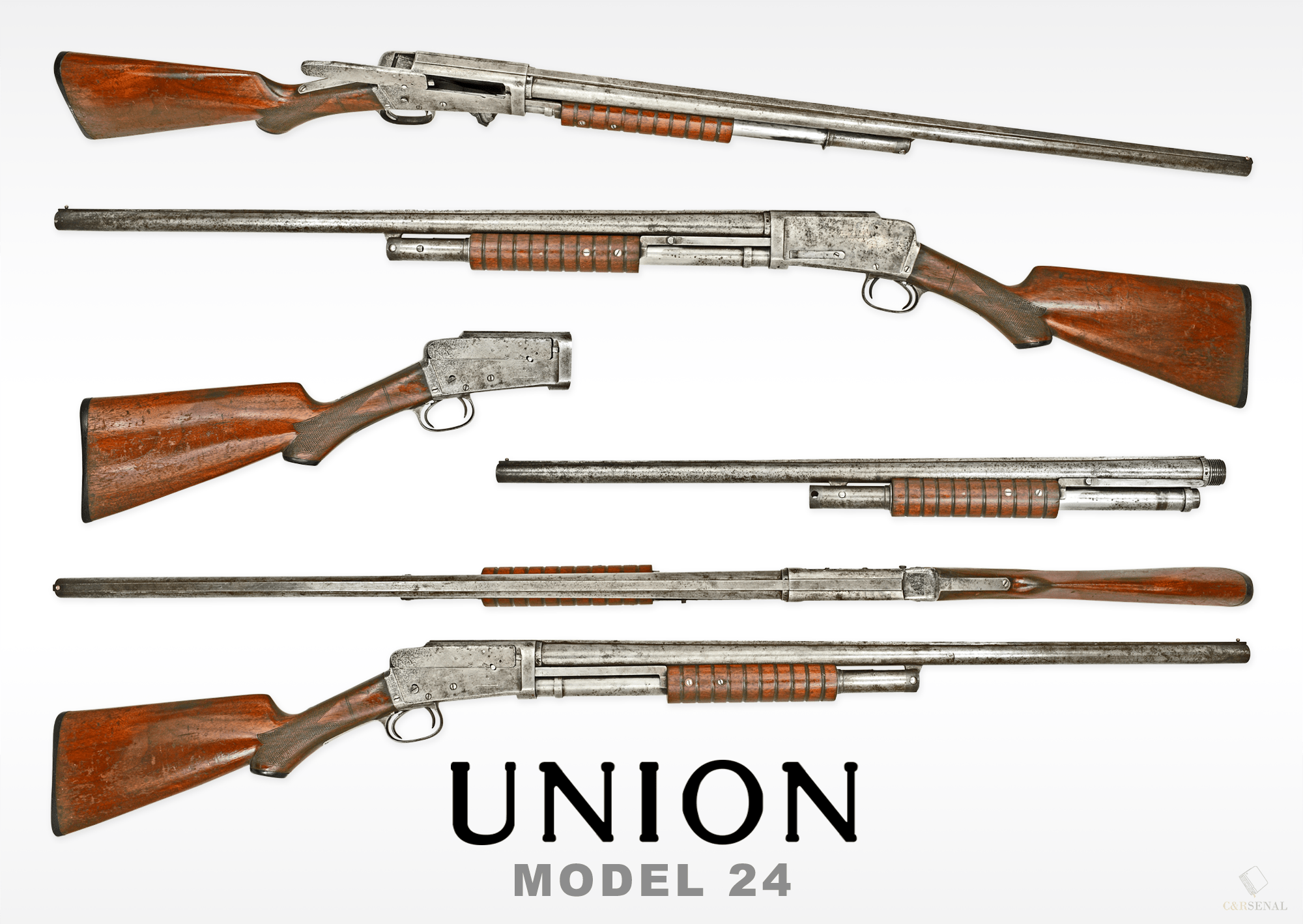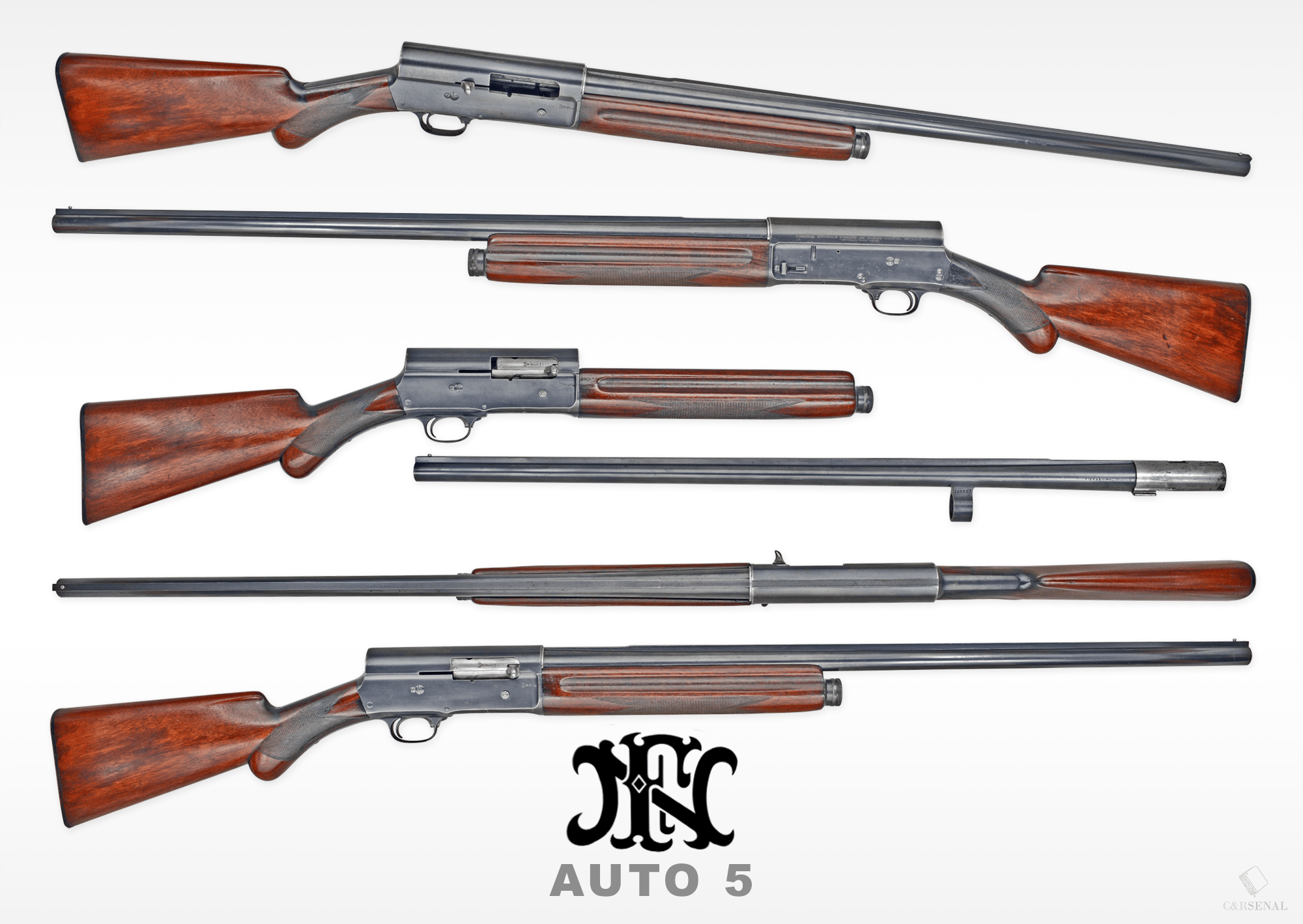Charles Young, born 1866, had grown up prepared take over his father’s agricultural tool business. He had also discovered a talent for clay shooting. In the 1890’s he became somewhat famous for his near perfect scores at the traps and was hired by various companies as a demonstration shooter, eventually settling in with the Peters Arms Company, later transferring to their Cartridge branch. Thanks to his love of the sport, Young would begin inventing and patenting various minor improvements to triggers, safeties, and other features of trap guns. Eventually he would file patents for whole firearms.
The Young Repeating Shotgun, as we see it here, was covered by two patents granted in 1901 and 1902. Young had created a streamlined, single-barrel, two-shot firearm specifically for trap shooting. Narrow, simple, and featuring a high comb, semi-pistol grip stock, and simple action, the Young was meant to split the difference between a fine double barrel and a modern repeating shotgun.
The action is opened by depressing the inertial safety switch just in front of the trigger, then pulling forward on the forend. The gun seemingly comes apart in halves, exposing the breech and allowing a lifter to pop up. Simply chamber your first cartridge and place the second on the lifter, which tucks away when you close the action back up. After firing your first shot, rapidly pull the action open and then snap it shut. The lifter will have popped up once the action opened and the barrel would have enveloped the second cartridge as you closed back up. Now you can fire again; rapidly and without seeking a second trigger or having to account for the position of a second barrel.
Locking is fairly simple. A block in the receiver is sprung upwards, constantly engaging a lug on the underside of the barrel. When closed, the roller arm inside the forend further prevents this block from falling. When the user pulls the forend forward, the attached roller arm tips an internal transfer bar, which in turns lowers the locking block momentarily. This unlocks the barrel, which is now carried forward by the forend. The locking block in the receiver then springs back upwards again and snags a second lug on the barrel, which halts the pull. While that is happening, a two-piece rod affixed inside the forend is also pulled forward, transferring that energy into the rear of the receiver in order to re-cock the striker. If you would like to take-down the Young, simply disconnect the two interlocked halves of the cocking rod, reach inside the receiver opening to manually depress the transfer bar for the locking block, and pull the barrel free.
In order to produce his gun, Charles Young established the Young Repeating Arms Co. as a stock company in 1901. A factory was established in Columbus, Ohio which would employ 31 men directly and a few more on contract. Parts manufacture took place in 1902 and 1903, with early advertisements starting to hit the Trap shooting magazines in preparation of a public release. In 1903, Young purchased another 7 acres for another factory building and then, just three weeks later, Young Repeating Arms entered receivership. It appears a number of investors who promised to purchase stock did not follow through and a suddenly financial collapse occurred. As part of the bankruptcy, Young negotiated the assembly and sale of some of his shotguns as proof of the viability of the company to better tempt potential buyers. Sears would, however, buy up the whole venture for pennies on the dollar, mostly for the building and the machinery. They too assembled what guns they could with minimal additional parts production.
Because of this what few hundred Youngs were ever made have a variety of features that do not always follow their serial order. A safety feature requiring you pull the forend back into your shoulder with some force is often missing, as is a latch under the receiver that allows for locking the lifter downwards, making the gun a single-shot. Also most guns seem to have been assembled without a factory butt plate and usually have period, or even later replacement rubber butt pads. Overall, the Young is a very rare repeating shotgun to encounter and certainly one of the most interesting looking.



